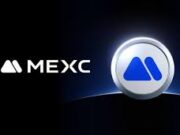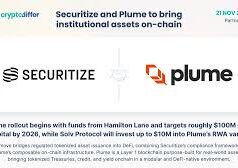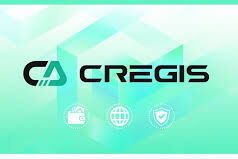Over recent months, the U.S. Securities and Exchange Commission (SEC) has moved toward a pivotal milestone: proposing universal listing standards for crypto exchange-traded products (ETPs). As a result, regulatory uncertainty could give way to faster, more efficient approval processes. Moreover, institutional investors, retail traders, and asset managers may all benefit. In this article, we explore what the proposal entails, why it matters, what challenges remain, and what to expect next.
What Are Universal Listing Standards?
Universal listing standards refer to a framework that would allow certain crypto ETPs to be listed on securities exchanges without needing a bespoke review under Rule 19b-4 each time. Instead, if a crypto asset meets pre-defined eligibility criteria, it would be able to use generic standards, similar to what exists for many traditional exchange-traded funds (ETFs). Thus, rather than waiting months, issuers could expect faster determination if their crypto-based ETP meets certain transparency, custody, trading history, and market-surveillance requirements. (Cointelegraph)
In addition, the SEC has recently approved in-kind creations and redemptions for crypto ETPs involving major assets like Bitcoin and Ether. This change aligns crypto ETPs more closely with commodity-based funds, which often allow such mechanisms. Consequently, costs of trading and operational friction may greatly reduce. (SEC)
Why the Shift Matters
First, the current process for getting crypto ETPs approved is long, uncertain, and resource-intensive. For example, each application under Rule 19b-4 may take up to 240 days or more, depending on whether the asset is novel, whether there are concerns about surveillance, custody, or market manipulation. (Cointelegraph)
Second, by introducing universal listing standards, the SEC could shrink that approval timeline dramatically — many analysts predict the time could drop to 60-75 days for products that meet the generic standards. Thus, new offerings, including altcoins like Solana, XRP, or Dogecoin, could more easily enter regulated U.S. markets. (Cointelegraph)
Third, the change could increase competition and innovation. Because issuers would not have to prepare unique filings for every asset, more crypto ETPs might be launched. As a result, investors might enjoy a wider variety of products, better liquidity, and potentially lower fees. (CoinCentral)
Furthermore, transparency and investor protection may improve because generic standards tend to require clear disclosures: daily holdings, premium/discount, trading volume, bid-ask spread, liquidity risk policies, and other ongoing obligations. These requirements help ensure that investors understand risks before they invest. (Eversheds Sutherland)
What Has the SEC Already Done
- In July 2025, the SEC voted to allow in-kind creations and redemptions for authorized participants of crypto ETPs for assets like Bitcoin and Ether. Prior to that, many ETPs were restricted to cash-only redemption/creation, which introduced inefficiencies and costs. (SEC)
- Concurrently, exchanges such as Cboe BZX, NASDAQ, and NYSE Arca have filed proposed rule changes to establish generic listing standards for commodity-based trust shares — the product class under which many spot crypto ETPs would fall. (Eversheds Sutherland)
- Also, new guidance from the SEC requiring enhanced disclosure around custody, risk, and structure of crypto ETFs has signaled a shift toward clearer regulatory guardrails. (Reuters)
Key Features Likely to Be Part of the Generic Listing Standards
While the proposal is not yet finalized, several likely criteria and features are repeatedly mentioned in commentaries, industry analyses, and filings:
| Feature | What It Means |
|---|---|
| Eligibility of Underlying Asset | The asset must have a regulated futures market (e.g. through a CFTC-registered designated contract market), or must satisfy trading history thresholds. (Cointelegraph) |
| Surveillance & Market Integrity | Exchanges listing the ETP must have surveillance sharing agreements (directly or via groups like the ISG) with markets where the underlying or related derivatives trade. (Eversheds Sutherland) |
| Disclosure Requirements | Daily online disclosures of net asset value, holdings, premium/discount, liquidity risk policies, etc. (Eversheds Sutherland) |
| Redemption / Creation Mechanism | Allowing in-kind (asset-for-shares) creation/redemption instead of cash-only, which reduces costs and minimizes tax and trading inefficiencies. (SEC) |
Potential Benefits: Who Stands to Gain—and How
Because of these changes, several groups may benefit:
- Investors will gain better access to regulated crypto products, which may reduce exposure to unregulated exchanges or unclear custody arrangements. Meanwhile, costs could fall and transparency increase.
- Asset managers and issuers could launch products faster, with less regulatory drag, and with more certainty. That likely incentivizes innovation.
- Exchanges will benefit by seeing more products listed under clearer standards, increasing competition and trading volume.
- Regulators gain better tools to monitor markets, enforce surveillance, and ensure that investment products meet uniform rules, rather than patchwork standards.
Risks, Challenges, and What Might Go Wrong
Nonetheless, universal listing standards do not come without risks. Moreover, the crypto market has unique features that complicate regulation.
- Volatility & Custody Risks: Digital assets tend to be more volatile than traditional commodities or equities. Furthermore, custody is still a developing space. Poor custody or unrealistic assumptions about asset safety could lead to scandals.
- Which Assets Qualify: Some crypto tokens may not have sufficient trading history, or derivatives futures markets, to satisfy eligibility thresholds. Thus, many altcoins might still be excluded initially.
- Regulatory Uncertainty Until Final Rules: Because the listing standards are still proposed, there is potential for changes, pushback, or delays. For example, exchanges or asset managers may argue for different criteria, and public comments may shape the final outcome.
- Investor Understanding: Even with disclosures, many retail investors misunderstand risk. Without education, increased access could lead to misaligned expectations and losses.
- Cross-jurisdictional Risks: As the SEC sets rules, other countries may follow; or may diverge. Moreover, international coordination might remain weak in surveillance or risk sharing.
What Comes Next
Firstly, the SEC is expected to weigh public comment on the proposed rules from exchanges; this includes input about which assets should qualify, what thresholds to use, and what surveillance or custody requirements are truly workable.
Secondly, final adoption may occur in the coming months (many sources suggest October 2025 as a possible timeframe). If finalized, issuers might begin listing crypto ETPs using the new rules before year-end. (Mitrade)
Thirdly, we are likely to see a wave of new applications for crypto ETPs tied to assets beyond Bitcoin and Ether—especially those like Solana, XRP, Dogecoin, Chainlink, etc.—provided they satisfy the eligibility criteria. (Bitget)
Finally, investors and firms will be watching the effect on fees, product innovation (e.g. thematic ETPs, index baskets), and market liquidity. If generic listing standards reduce friction as expected, crypto ETPs could become more mainstream investment vehicles.
Implications for Related Topics
- For articles on crypto regulation, this development ties into broader themes such as the SEC’s guidance on disclosure requirements for crypto ETPs. (See related post: “How Crypto ETFs are Being Regulated: Custody, Risk & Disclosure”)
- For content on investing in altcoins, this change opens potential pathways for altcoin ETPs to get regulatory approval. If you write about XRP or Solana investing, this is directly relevant.
- For tax & operational cost posts, the shift to in-kind redemptions has tax implications and may reduce trading costs.
Conclusion
In conclusion, the SEC’s proposal for universal listing standards for crypto ETPs represents a potentially transformative step toward integrating digital assets more fully into regulated capital markets. Because the proposed rules could slash approval times, provide clearer eligibility criteria, and enhance investor protections, they might accelerate mainstream adoption. Although risks and unanswered questions remain, such as which assets qualify and how custody will be regulated, the trajectory seems clear: crypto ETPs are edging closer to the regulatory efficiency enjoyed by traditional investment products.
To stay informed, follow updates from the SEC, check filings from exchanges like NASDAQ and NYSE Arca, and watch commentary from asset managers like Bitwise. For further reading, see the SEC’s “Permits In-Kind Creations and Redemptions for Crypto ETPs” order and coverage of the new proposed generic listing standards. (SEC)



























